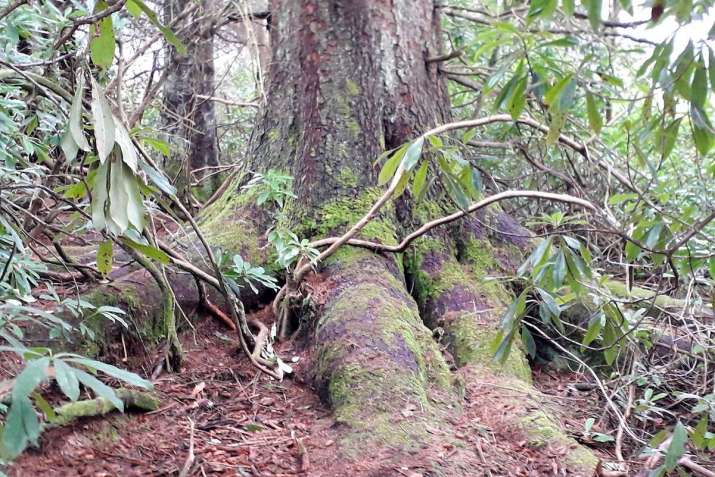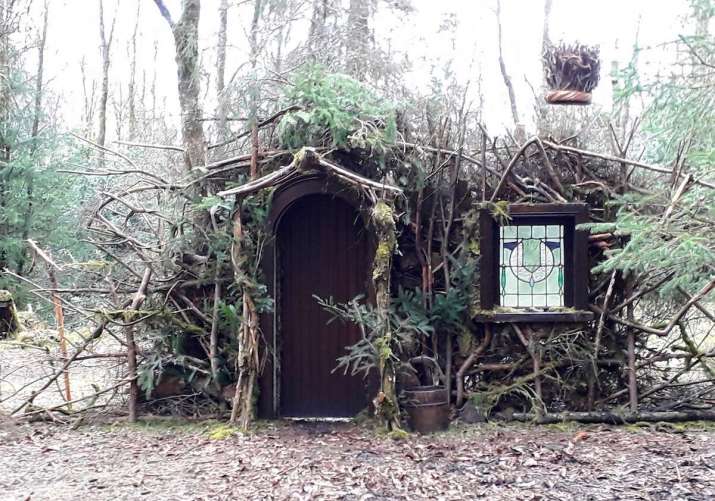A man can stand anything except a succession of ordinary days.
— Johann Wolfgang von Goethe
Reality leaves a lot to the imagination.
― John Lennon
In Philip Pullman’s His Dark Materials trilogy of novels we are introduced to a powerful magical device, the “subtle knife” that allows its rightful carrier to cut through the atmosphere, to create an opening into another world and another time. Doing so requires precision, skill, commitment, and courage; you just don’t know what you’ll find. But it’s always worth the risk: on the other side await undreamed of adventures and rewards; opportunities to prove yourself as a different, more splendid kind of person. And you are likely to meet strange companions; creatures who frighten, delight, and enlighten you. Children’s and fantasy literature abound with doorways into charmed places and astonishing ways of being, from Alice in Wonderland’s rabbit hole, to the wardrobe in Narnia, to Platform 9¾ in the Harry Potter novels. As the reader, or movie-watcher, we readily suspend disbelief, as if stepping through magical portals is quite the done thing, something with which we are well acquainted.
We have always known how to relieve the tedious “succession of ordinary days” and hours; through daydreaming, storytelling, or reading. These days, top of the list of imaginative escape routes is watching a screen; seven hours and 22 minutes daily for American teens,* excluding school-related work. We do enjoy abandoning ourselves to online entertainment, but some of this ubiquitous digital experience has lost its magic, particularly when, due to the pandemic, most of our work takes place online as well. We suffer from lockdown screen fatigue and feel our bodies and minds reacting to what is perceived as a somewhat lesser form of communication. There is no direct eye contact, we only see heads and shoulders and we don’t have a sense of bodies moving around us, sensing their weight, their physical warmth, or imbibing their scent. For hours we scan the square field in front of us, vigilantly and statically, which seems to stimulate the threat-system of the body, with its draining cocktail of stress hormones. Maybe we have become resigned to it, or maybe we have decided that online meetings are not for us.
But could we be missing opportunities to find more ease and pleasure in online meetings? They do have ecological, social, and economic advantages, after all. How about stepping out of autopilot, into full awareness, and exercising some choice in the ways we sense presence online, using our imagination actively and deliberately? How about reframing the image of the Zoom room into a magical portal that allows us to reach across space and time, to feel intimately and richly connected with others? I frequently imagine the reaction of someone from a previous age (Johann Wolfgang von Goethe, for some reason often comes to mind) entering my flat and being stunned by the fact that we see people who are not actually present. And even have conversations with them! For a moment, there would be alarm and confusion—are they, or are they not there? What is this strange magic? He may have felt the urge to step behind the screen, as my two-year-old granddaughter did, to check it out. Or maybe, as a poet, he would easily appreciate that our connection with others is not that dependent on physical presence. After all, he is often quoted encouraging us to use the imagination, together with willpower, to achieve our dreams.

A while ago, I found a magical portal in a wood. I had driven a few miles out of Glasgow to find some peace and quiet in nature (not easy to find, with so many others doing the same). Eventually, I found a spot away from the sound of cars at Mugdock Country Park, among the massive roots of tall conifers and the spreading tangle of rhododendron. The wind was sighing through the high branches of the trees in reassuring long swells, like the ancient Earth breathing.
“I am sorry, dear trees,” I said. “I am sorry for the mess we humans are making of the planet we are sharing.” The tree I was looking at, maybe a Douglas Fir several hundred years old, reminded me of an old mammoth and I longed to lean into its shaggy fur. We stayed together for a while and I wrote a kind of lament (to be shared another time perhaps).
Then I noticed a path that led further into the copse of conifers and rhododendrons, neither of them indigenous, but seemingly at home in this place and with each other. Some light drew me forward into a clearing where someone had made a wattle-fenced enclosure. Entering though a gate, I found an enchanting little hut, made of interwoven branches, mosses, and lichens. It had an arched wooden door, and next to it, a striking stained-glass window. A wooden pail by the door gave the impression, that some witch or elf might step out of the hut at any moment to fetch water. Stepping carefully, trying not to make a noise, I moved around this delightful shelter, wanting to find out more. But, it turned out, there was nothing behind the façade, just the forest floor. The archway was an entrance to nothing. But was it?Photo by the author

I didn’t feel let down, because the magic had already happened. I had already filled out the picture in a way that added spice to the day by holding off affixing a particular, rational meaning. (The rational explanation was provided by a guard I met later: it turned out that the scene was a set for a film about fairies.) As John Lennon said: “Reality leaves a lot to the imagination.” Some people believe they “don’t have any imagination,” but it is integral to the ordinary ways our minds work. The raw information that enters our brains through sight, hearing, touch, smell, and taste is made sense of and enlarged upon by our associative memories and cultural conditioning. We constantly conjure up inner images to which we compare incoming data. What seems “real” is a mysterious, multi-stranded process that can best be done justice in a humble, interactive, and lightly held approach of meaning-making. The relatively recent human habit of always trying to be in control, of separating self and others, and exploiting the world for our own benefit, leads to impoverished inner and outer lives. The unusual and unexpected appearance of that magical forest scene made it easy for me to surrender control and feel in the presence of some feature of life that I happily didn’t completely understand.
Charles Eisenstein said: “We are all here to contribute our gifts toward something greater than ourselves, and will never be content unless we are.” So here is the computer screen, filled with a dozen mugshots of human beings, some seemingly poised and calm, some fidgeting, some frozen. And there is so much more to it than that, more than I can ever fully encompass. What gift can I contribute to this situation in order to allow a richer and more connected reality to lighten this meeting? How can I make a difference to these sisters and brothers with whom I share a precarious home on this ailing planet?
There is a mysterious connection between beliefs and action. Acting in the service of beauty and love generates a morphic field that shifts all beings toward those values. These actions don’t have to be very special or heroic, and they benefit from a creative use of the imagination. If I have the privilege to guide a group meeting online, I may encourage everyone to be aware of the gravitational pull of the Earth that supports us all equally.
You too, my reader, allow yourself to feel the comfort of belonging to this planetary community of beings. The Earth holds us. So many life forms have made the air we breathe together. Let this one breath of life flowing through you count, right now, without the pressure of needing to accumulate worthwhile experiences. This being present is enough, and it connects us in unfathomable yet tangible ways. Trust the connection. Close your eyes and just imagine some people with whom you share this life, or this Zoom meeting. Pause. Surrender to the truth of our Interbeing.** Relax into your body, particularly into the back body. Keep that knowing alive in your heart, as you open your eyes and see what magic might happen in our communication now.
* Teens spend more than 7 hours on screens for entertainment a day: Report (ABC News)
** The Insight of Interbeing (Garrison Institute)
See more
Living Mindfulness
Holy Isle Centre For World Peace And Health












